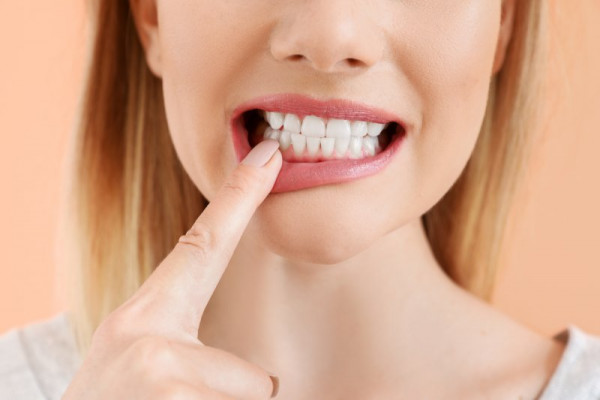Last updated on March 17, 2024
Key Takeaways:
- Tooth tightening is a dental procedure that improves the alignment and overall health of teeth.
- Benefits of tooth tightening include an improved appearance, easier cleaning, better bite, and prevention of dental issues.
- Common myths about tooth tightening include it being only cosmetic and extremely painful.
- Teeth can shift over time due to various factors, and orthodontic appliances help move them back into proper alignment.
- Tooth tightening improves oral health by making cleaning easier and correcting bite problems.
- Simple at-home techniques for tooth tightening include natural remedies, DIY methods, and oral exercises.
- Severe dental issues require professional help, and available orthodontic treatments include braces and clear aligners.
- The cost and duration of professional tooth tightening vary depending on the case and chosen treatment method.
- Understanding Tooth Tightening
Tooth tightening is a dental procedure that involves adjusting the position of the teeth to improve their alignment and overall oral health. This technique is commonly used to address issues such as loose teeth, misalignment, and overcrowding. By tightening the teeth, you can achieve a more attractive smile and prevent further dental problems.
- What is tooth tightening and why is it important?
Tooth tightening, also known as orthodontic treatment, is important for several reasons. First and foremost, it can improve the appearance of your smile, giving you more confidence and self-esteem. Additionally, properly aligned teeth are easier to clean, reducing the risk of tooth decay and gum disease. Tooth tightening can also improve your bite, preventing problems such as temporomandibular joint disorder (TMJ). Overall, tooth tightening plays a crucial role in maintaining optimal oral health.
- The benefits of tightening your teeth
There are numerous benefits to tightening your teeth. Firstly, it can make your smile more aesthetically pleasing, boosting your self-confidence and improving your overall appearance. Additionally, properly aligned teeth can improve your speech and make it easier for you to chew food. Tightening your teeth can also help prevent dental issues such as tooth decay, gum disease, and even tooth loss. It can also correct bite problems, reducing the risk of discomfort and jaw disorders. Overall, tooth tightening can have a significant positive impact on your oral health and quality of life.
- Debunking common myths about tooth tightening
There are several myths surrounding tooth tightening that need to be debunked. One common misconception is that tooth tightening is only for cosmetic purposes. While improving your smile is certainly a benefit, the effects of tooth tightening go far beyond aesthetics. Another myth is that tooth tightening is extremely painful. In reality, modern orthodontic treatments have advanced significantly, and discomfort during the process is typically minimal. It’s also important to note that tooth tightening is not limited to children and teenagers. Adults can also benefit from orthodontic treatment to correct misaligned teeth and improve their oral health.
- The Science Behind Tooth Tightening
Understanding the science behind tooth tightening can help you grasp why this procedure is effective in improving your oral health and appearance.
- How teeth move and shift over time
Teeth are not fixed in place and can shift over time due to various factors. The movement of teeth can occur naturally as part of the aging process, or it can be influenced by external factors such as oral habits, trauma, or dental conditions. When the teeth shift out of alignment, it can lead to various dental problems. Tooth tightening aims to move the teeth back into their proper positions, restoring their functionality and aesthetics.
- The role of orthodontic appliances in tooth tightening
Orthodontic appliances, such as braces or clear aligners, play a crucial role in tooth tightening. These devices apply gentle and continuous pressure on the teeth, gradually moving them into the desired positions. Braces consist of metal brackets that are bonded to the teeth and connected by wires. Clear aligners, on the other hand, are removable trays made of transparent plastic that are customized to fit your teeth. These appliances work by exerting the necessary force to shift the teeth and guide them into alignment.
- How tooth tightening affects your overall oral health
Tooth tightening has a significant impact on your overall oral health. By straightening misaligned teeth, it becomes easier to clean them effectively, reducing the risk of plaque buildup, gum disease, and tooth decay. Improved oral hygiene can also contribute to fresher breath and a healthier mouth. Additionally, tooth tightening can correct bite problems, which can alleviate issues such as headaches, jaw pain, and uneven wear on the teeth. Properly aligned teeth distribute biting forces more evenly, promoting better oral health and preventing unnecessary strain on the jaw joints.
- Simple Techniques for At-Home Tooth Tightening
If you’re looking for how to tighten a tooth at home, there are some simple techniques you can try. While these methods may not produce the same results as professional orthodontic treatment, they can complement your oral care routine.
- Using natural remedies to tighten loose teeth
Some natural remedies have been suggested to help tighten loose teeth. One popular option is oil pulling, an ancient practice that involves swishing oil around the mouth to reduce bacteria and improve oral health. Coconut oil is often recommended for this purpose. Another natural remedy is a mixture of turmeric and mustard oil, applied to the gums and teeth to strengthen the periodontal ligaments that hold the teeth in place. However, it’s important to note that these remedies are not backed by scientific research, and it’s always best to consult with a dentist before trying any home remedies.
- DIY methods for gently guiding misaligned teeth
If you have minor misalignment issues, there are some DIY methods you can try to gently guide your teeth into better alignment. One technique is using dental floss to create a “tie” between the misaligned teeth. By applying gentle pressure in the desired direction, you may be able to gradually shift the misaligned tooth. Another method is using orthodontic wax to cover sharp edges or protruding teeth, encouraging them to move towards their correct positions. However, it’s important to exercise caution when attempting these DIY methods and to seek professional dental advice if you’re unsure.
- Oral exercises and habits that promote tooth tightening
In addition to natural remedies and DIY methods, there are oral exercises and habits that can promote tooth tightening. One such exercise is tongue thrusting, where you press your tongue against the roof of your mouth to help align the teeth. Chewing sugar-free gum can also promote tooth movement as it stimulates saliva production and increases blood flow to the gums. Orthodontic trainers, or “O-tips,” are specialized tools designed to apply light pressure to specific teeth, encouraging them to move. Incorporating these exercises and habits into your daily routine may help maintain tooth alignment and improve your overall oral health.
- Seeking Professional Help for Tooth Tightening
While at-home techniques can be helpful, it’s important to seek professional help for more severe dental issues. A dentist or orthodontist can provide tailored treatment options to address misalignment, crowded teeth, or other orthodontic concerns.
- When to consult a dentist or orthodontist for tooth tightening
If you are experiencing severe misalignment, persistent pain, or difficulties with chewing or speaking due to dental issues, it’s time to consult a dentist or orthodontist for tooth tightening. These professionals have the expertise to assess your specific needs and recommend appropriate treatment options. They can diagnose the underlying cause of your dental problems and provide solutions to correct them effectively.
- Available orthodontic treatments for tooth tightening
Orthodontic treatments for tooth tightening have evolved significantly over the years. Braces are a common option that uses metal brackets and wires to gradually move the teeth into proper alignment. Clear aligners, such as Invisalign, are an alternative option that offers a more discreet and removable treatment option. Other orthodontic appliances, such as expanders or headgear, may be recommended for specific cases that require additional intervention. Your dentist or orthodontist will recommend the most suitable treatment based on your individual needs.
- Understanding the cost and duration of professional tooth tightening
The cost and duration of professional tooth tightening can vary depending on the complexity of your case and the chosen treatment method. Generally, orthodontic treatments can range from several months to a few years. The cost can also vary, but many dental insurance plans cover a portion of the expenses. It’s important to consult with your dentist or orthodontist to understand the specific costs and duration associated with your treatment plan.
In conclusion, tooth tightening is a dental procedure that can improve the alignment, appearance, and overall health of your teeth. While there are simple at-home techniques that can complement your oral care routine, it’s essential to seek professional help for more severe dental issues. By understanding the science behind tooth tightening and debunking common myths, you can make informed decisions about your dental health and explore the available treatment options. Remember to consult with your dentist or orthodontist to determine the best course of action for your specific needs.
FAQ
Question: What is tooth tightening and why is it important?
Answer: Tooth tightening, also known as orthodontic treatment, is important for several reasons. First and foremost, it can improve the appearance of your smile, giving you more confidence and self-esteem. Additionally, properly aligned teeth are easier to clean, reducing the risk of tooth decay and gum disease. Tooth tightening can also improve your bite, preventing problems such as temporomandibular joint disorder (TMJ). Overall, tooth tightening plays a crucial role in maintaining optimal oral health.
Question: What are the benefits of tightening your teeth?
Answer: There are numerous benefits to tightening your teeth. Firstly, it can make your smile more aesthetically pleasing, boosting your self-confidence and improving your overall appearance. Additionally, properly aligned teeth can improve your speech and make it easier for you to chew food. Tightening your teeth can also help prevent dental issues such as tooth decay, gum disease, and even tooth loss. It can also correct bite problems, reducing the risk of discomfort and jaw disorders. Overall, tooth tightening can have a significant positive impact on your oral health and quality of life.
Question: What are some common myths about tooth tightening?
Answer: There are several myths surrounding tooth tightening that need to be debunked. One common misconception is that tooth tightening is only for cosmetic purposes. While improving your smile is certainly a benefit, the effects of tooth tightening go far beyond aesthetics. Another myth is that tooth tightening is extremely painful. In reality, modern orthodontic treatments have advanced significantly, and discomfort during the process is typically minimal. It’s also important to note that tooth tightening is not limited to children and teenagers. Adults can also benefit from orthodontic treatment to correct misaligned teeth and improve their oral health.
Question: How do teeth move and shift over time?
Answer: Teeth are not fixed in place and can shift over time due to various factors. The movement of teeth can occur naturally as part of the aging process, or it can be influenced by external factors such as oral habits, trauma, or dental conditions. When the teeth shift out of alignment, it can lead to various dental problems. Tooth tightening aims to move the teeth back into their proper positions, restoring their functionality and aesthetics.
Question: What is the role of orthodontic appliances in tooth tightening?
Answer: Orthodontic appliances, such as braces or clear aligners, play a crucial role in tooth tightening. These devices apply gentle and continuous pressure on the teeth, gradually moving them into the desired positions. Braces consist of metal brackets that are bonded to the teeth and connected by wires. Clear aligners, on the other hand, are removable trays made of transparent plastic that are customized to fit your teeth. These appliances work by exerting the necessary force to shift the teeth and guide them into alignment.
Question: How does tooth tightening affect overall oral health?
Answer: Tooth tightening has a significant impact on your overall oral health. By straightening misaligned teeth, it becomes easier to clean them effectively, reducing the risk of plaque buildup, gum disease, and tooth decay. Improved oral hygiene can also contribute to fresher breath and a healthier mouth. Additionally, tooth tightening can correct bite problems, which can alleviate issues such as headaches, jaw pain, and uneven wear on the teeth. Properly aligned teeth distribute biting forces more evenly, promoting better oral health and preventing unnecessary strain on the jaw joints.
Question: Are there any simple techniques for at-home tooth tightening?
Answer: If you’re looking for ways to tighten your teeth at home, there are some simple techniques you can try. While these methods may not produce the same results as professional orthodontic treatment, they can complement your oral care routine. Some natural remedies have been suggested to help tighten loose teeth, such as oil pulling with coconut oil or a mixture of turmeric and mustard oil. DIY methods like using dental floss or orthodontic wax can also be used to gently guide misaligned teeth. Additionally, oral exercises like tongue thrusting and chewing sugar-free gum may promote tooth movement. It’s important to note that these techniques should be used with caution and it’s best to consult with a dentist before trying any home remedies.
Question: When should I seek professional help for tooth tightening?
Answer: While at-home techniques can be helpful, it’s important to seek professional help for more severe dental issues. If you are experiencing severe misalignment, persistent pain, or difficulties with chewing or speaking due to dental issues, it’s time to consult a dentist or orthodontist for tooth tightening. These professionals have the expertise to assess your specific needs and recommend appropriate treatment options. They can diagnose the underlying cause of your dental problems and provide solutions to correct them effectively.


















Be First to Comment